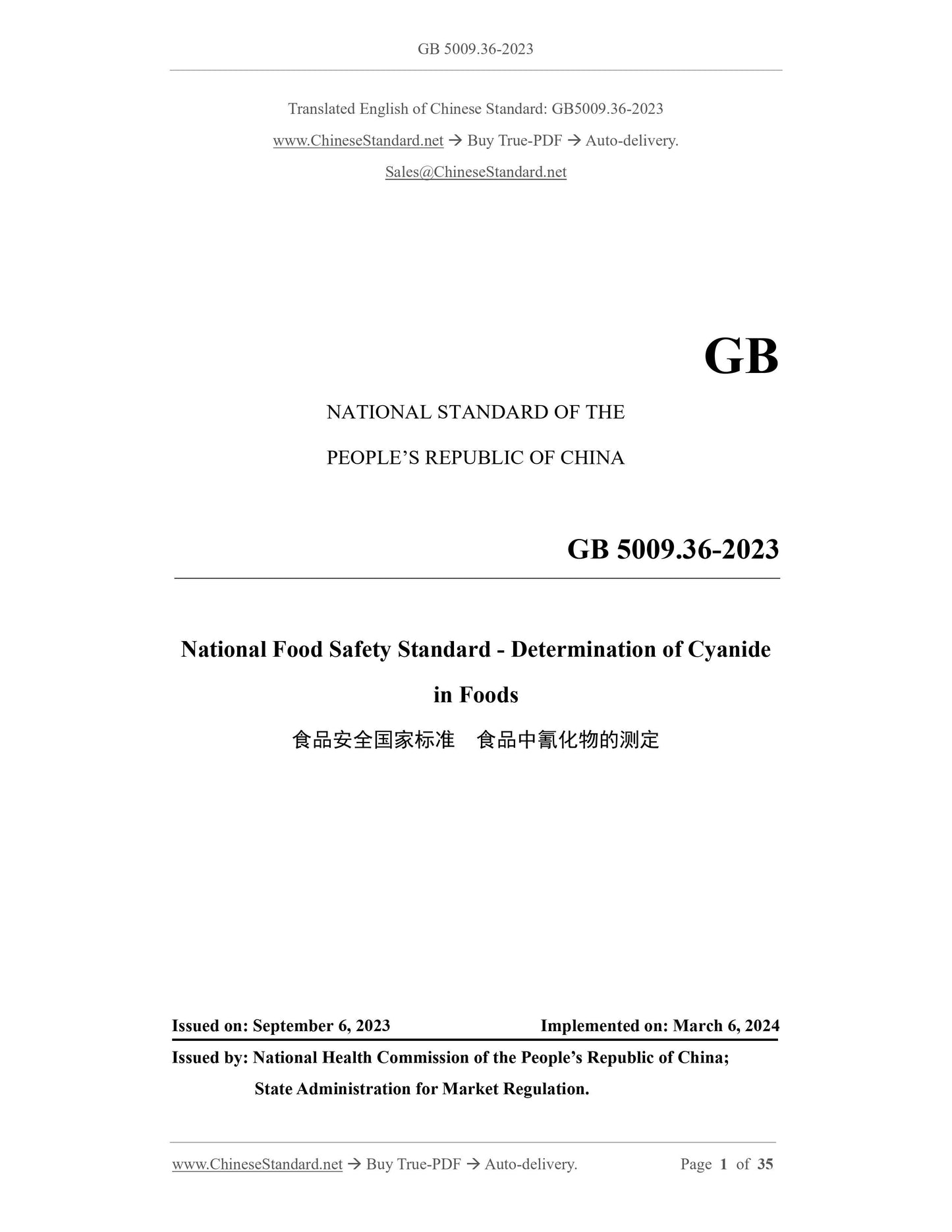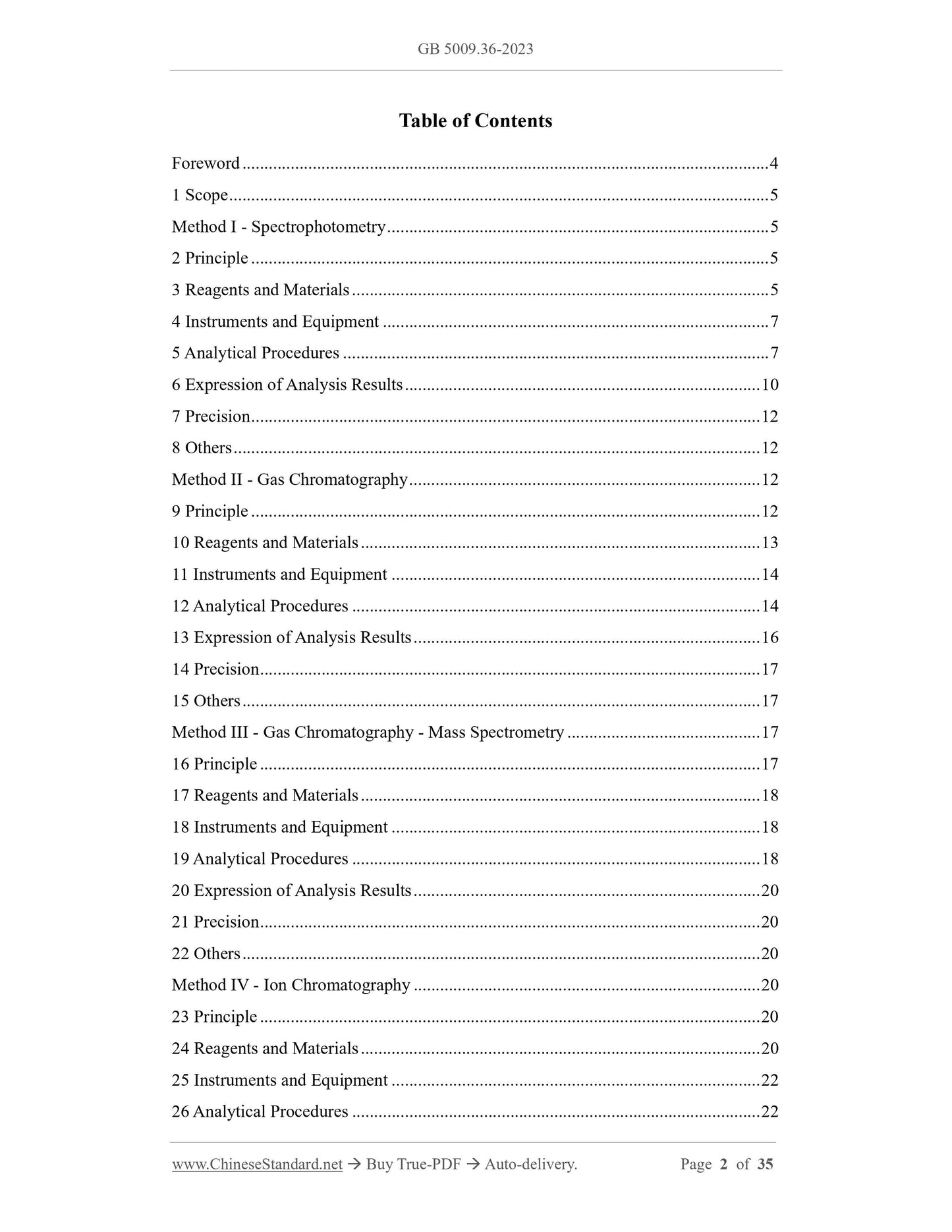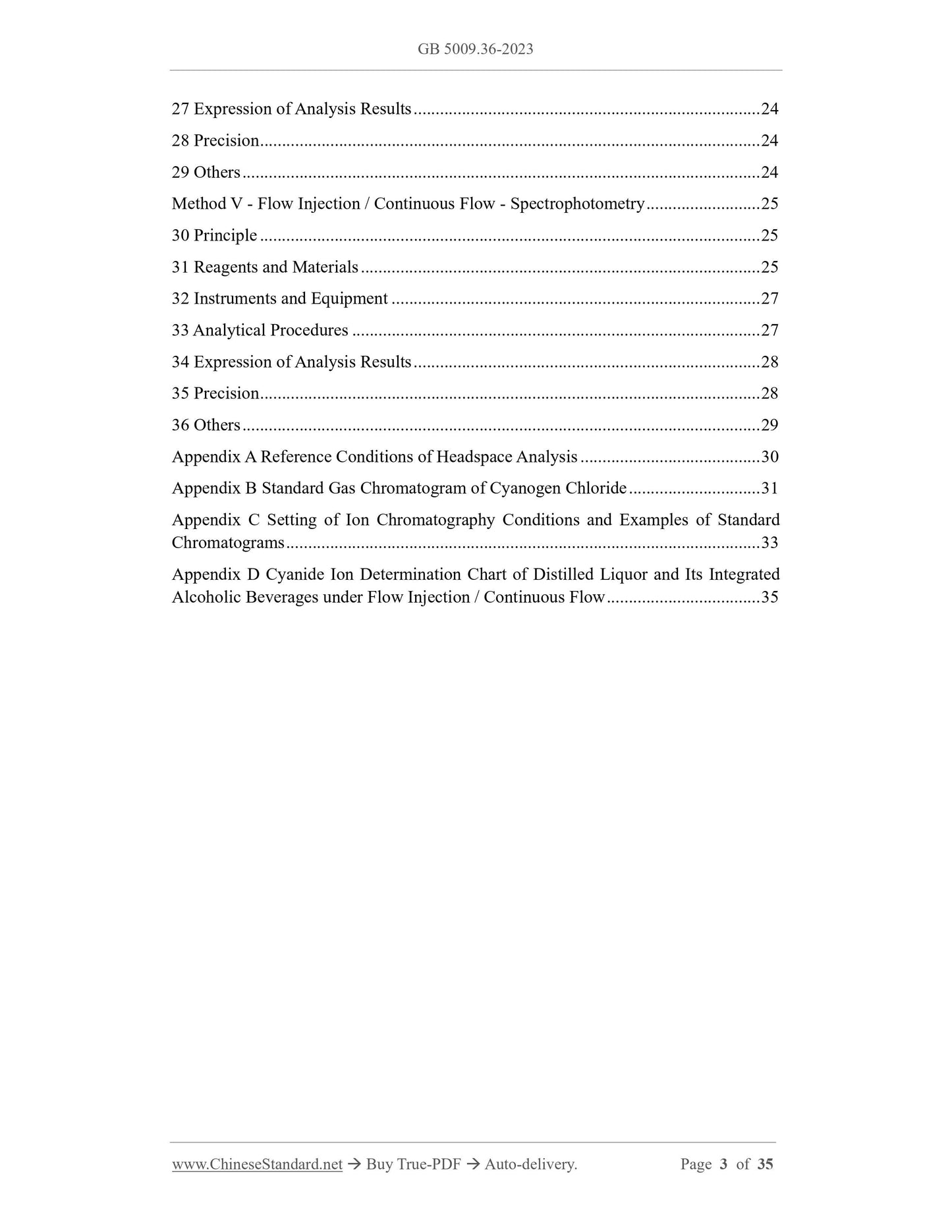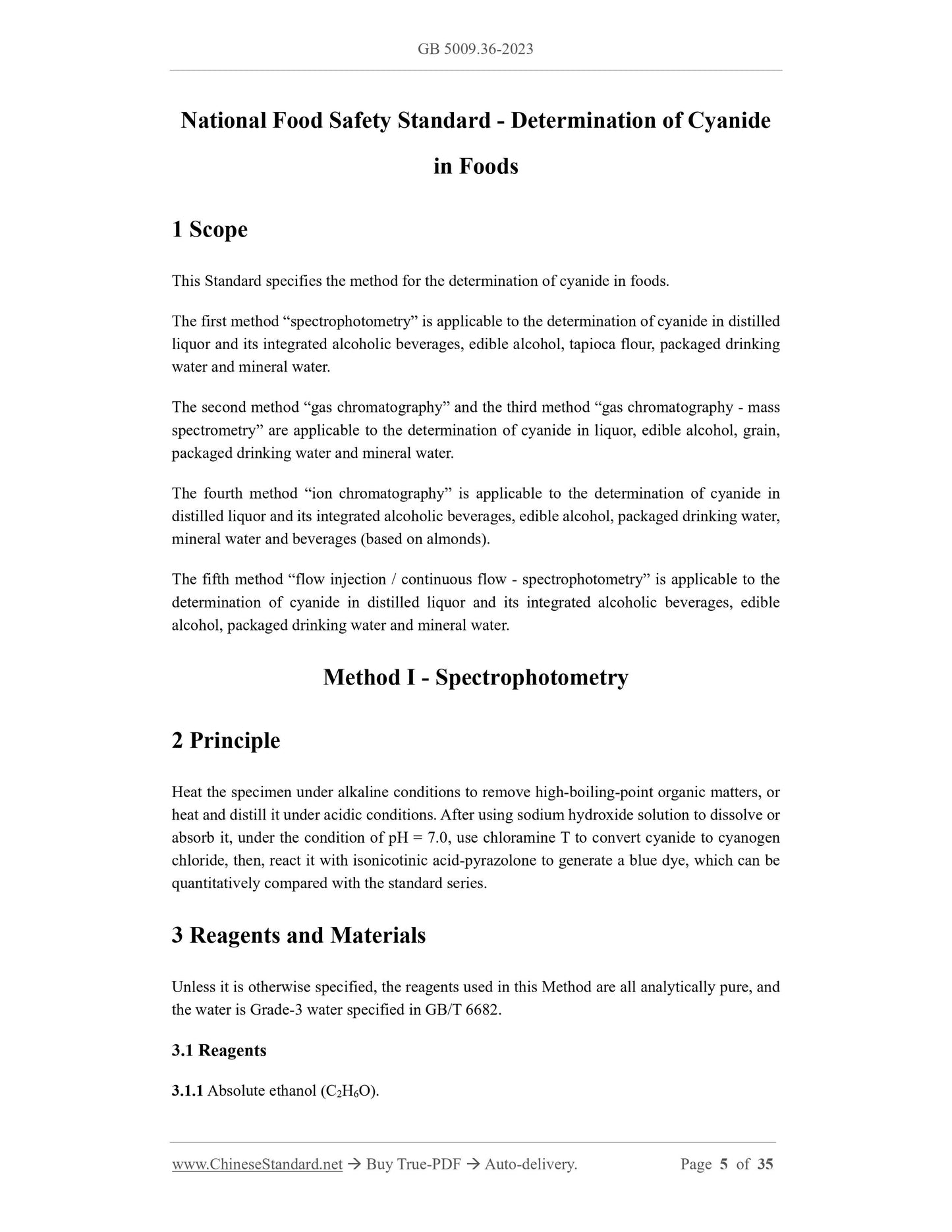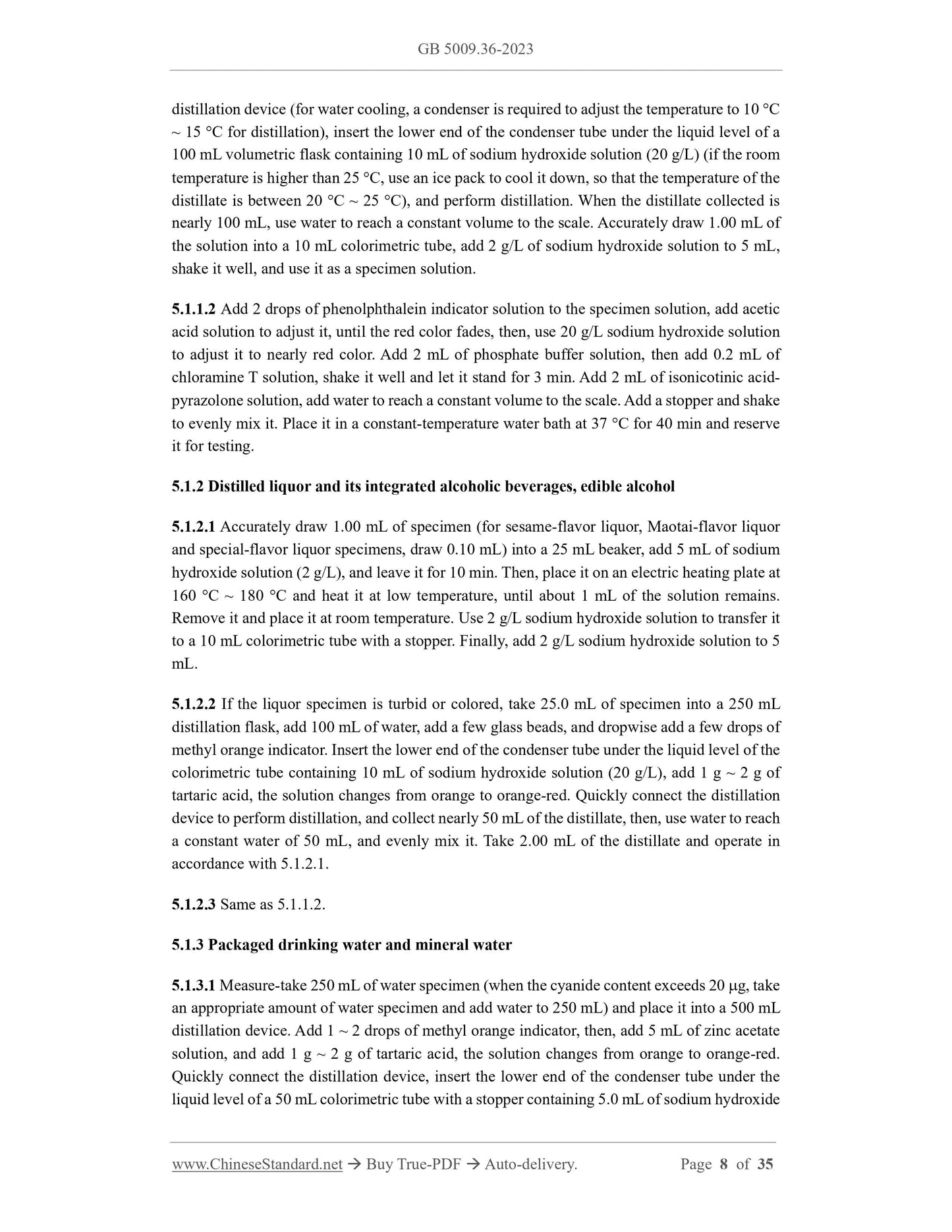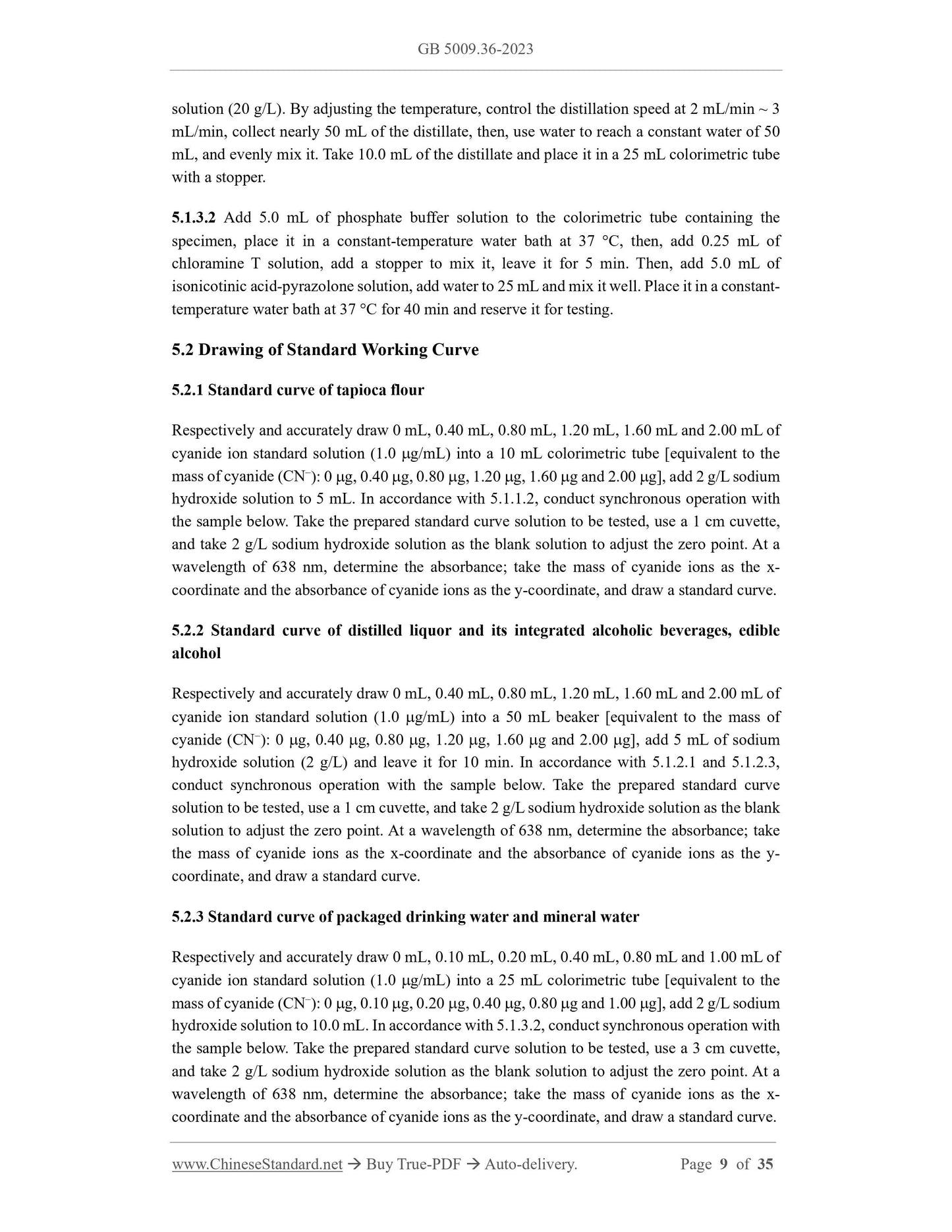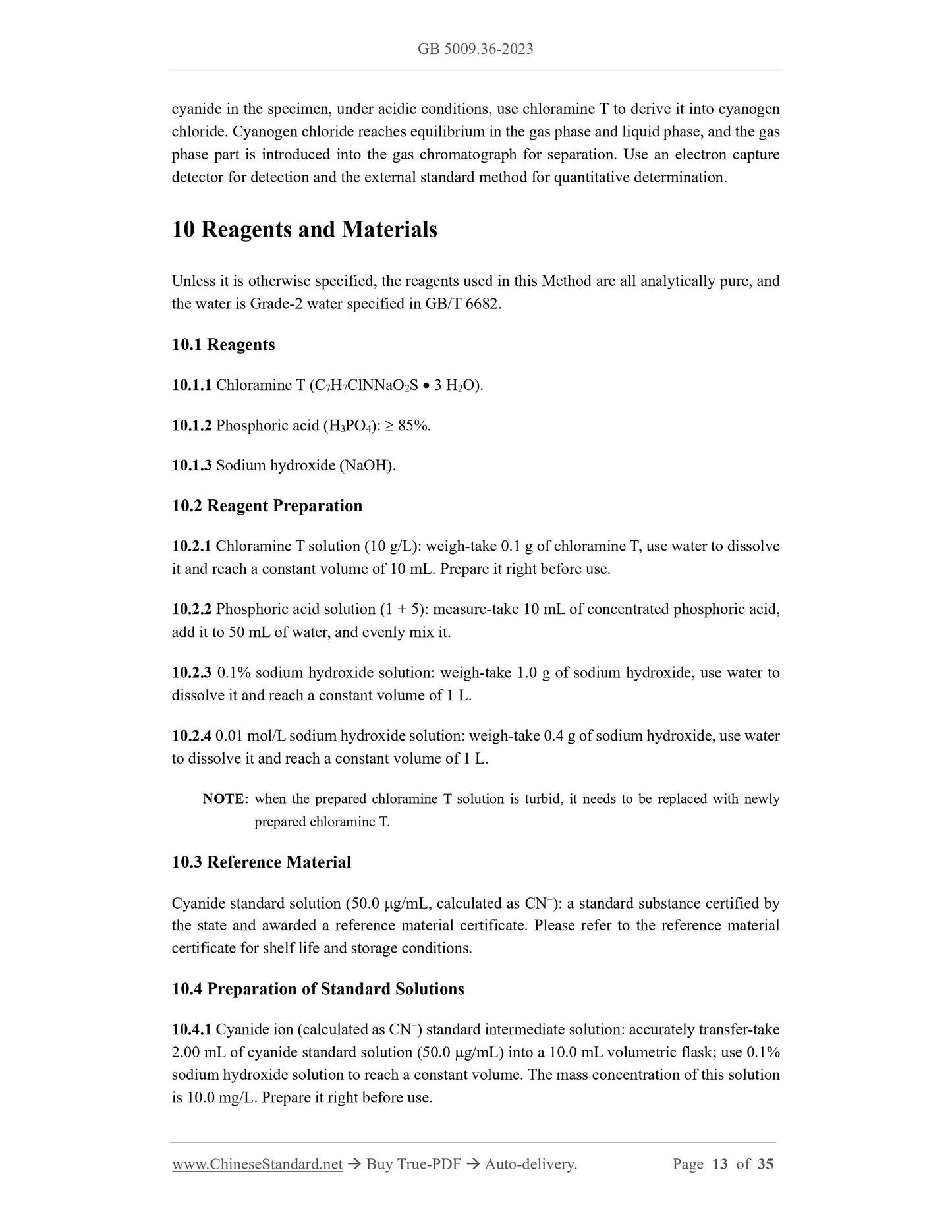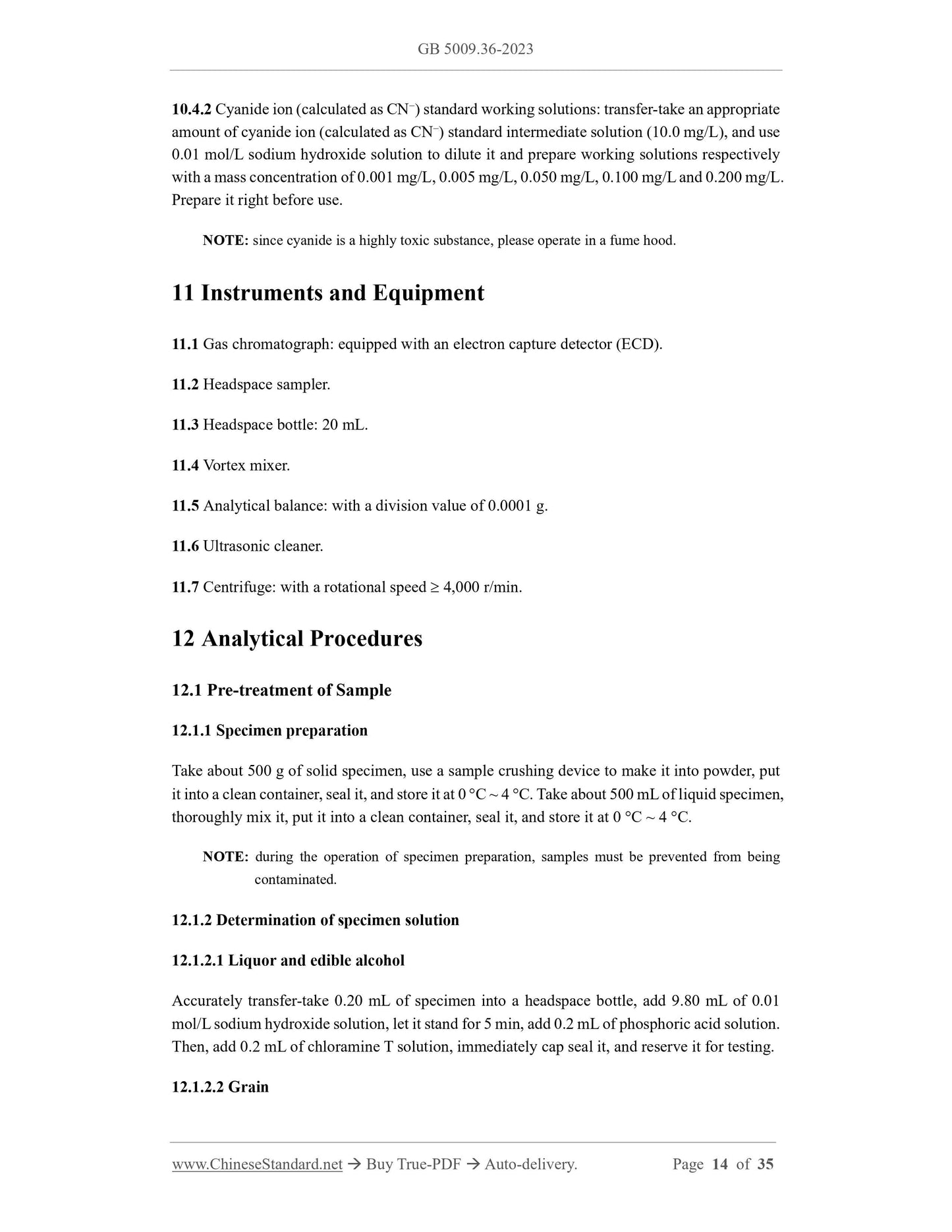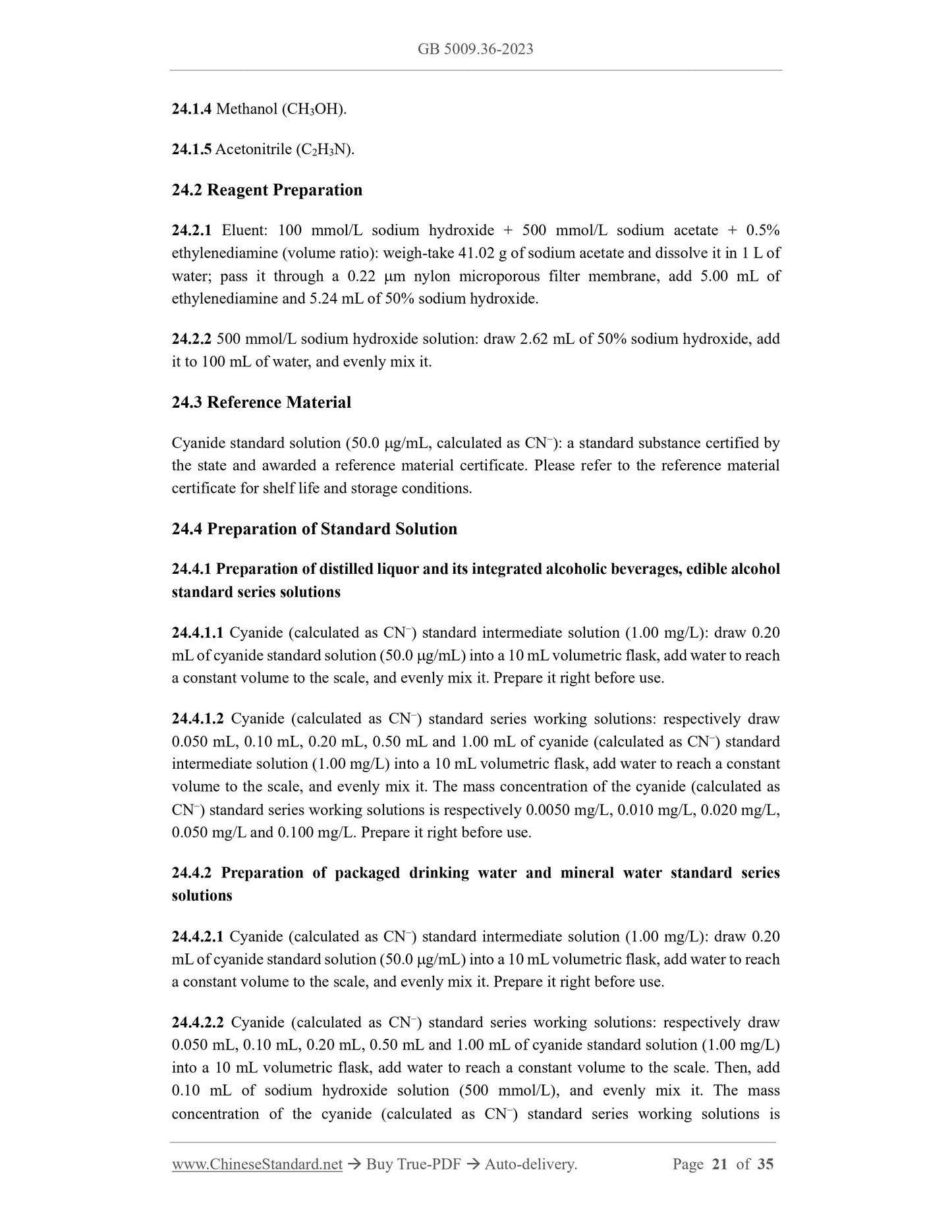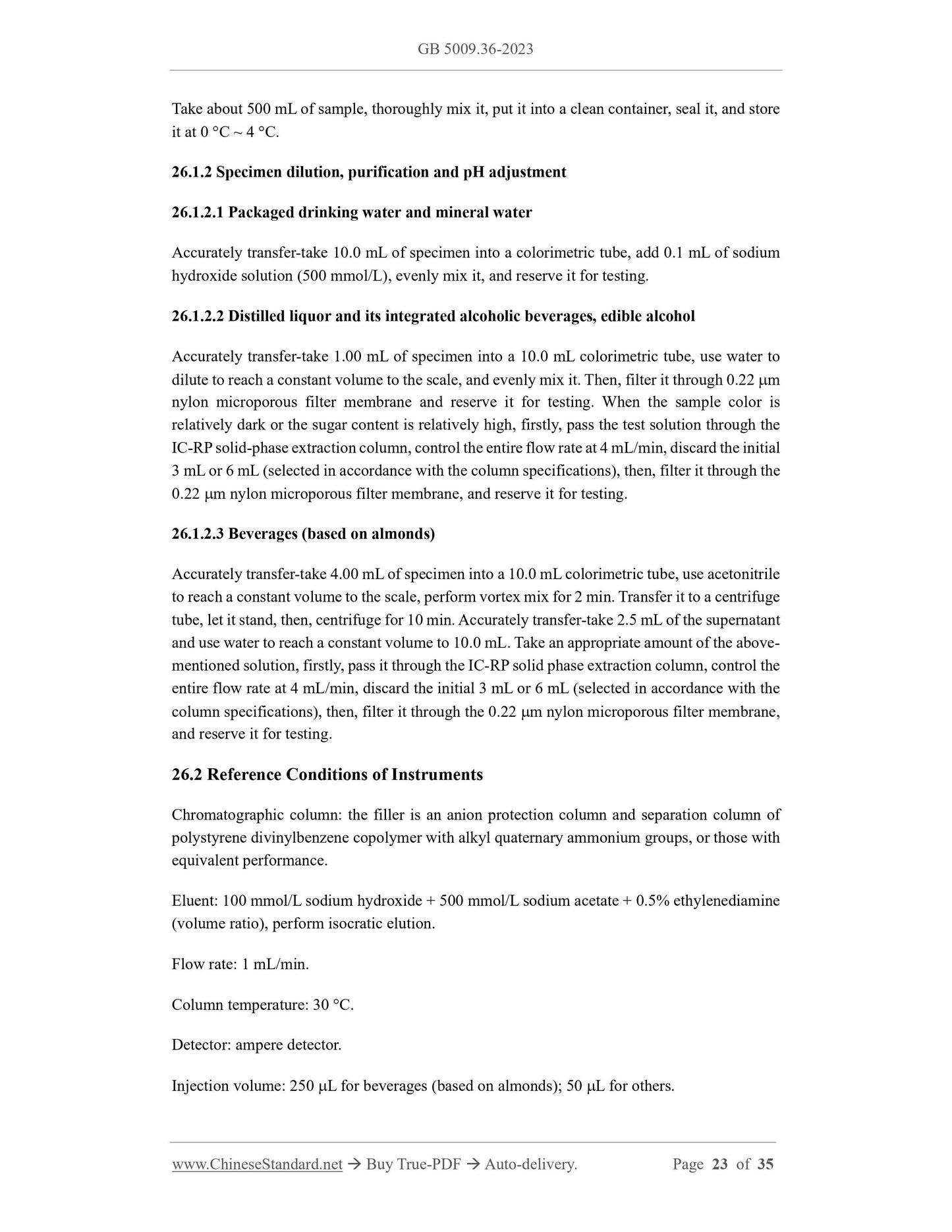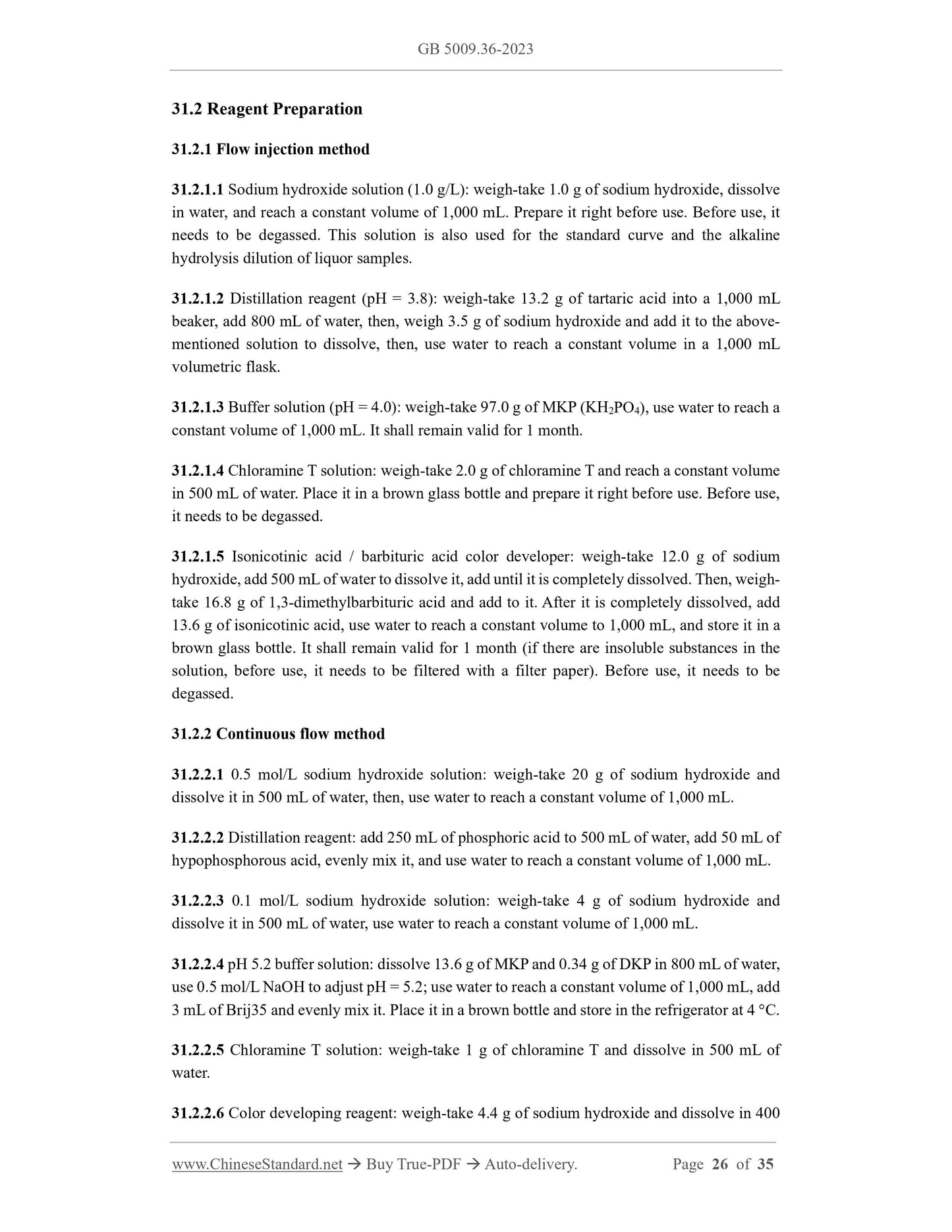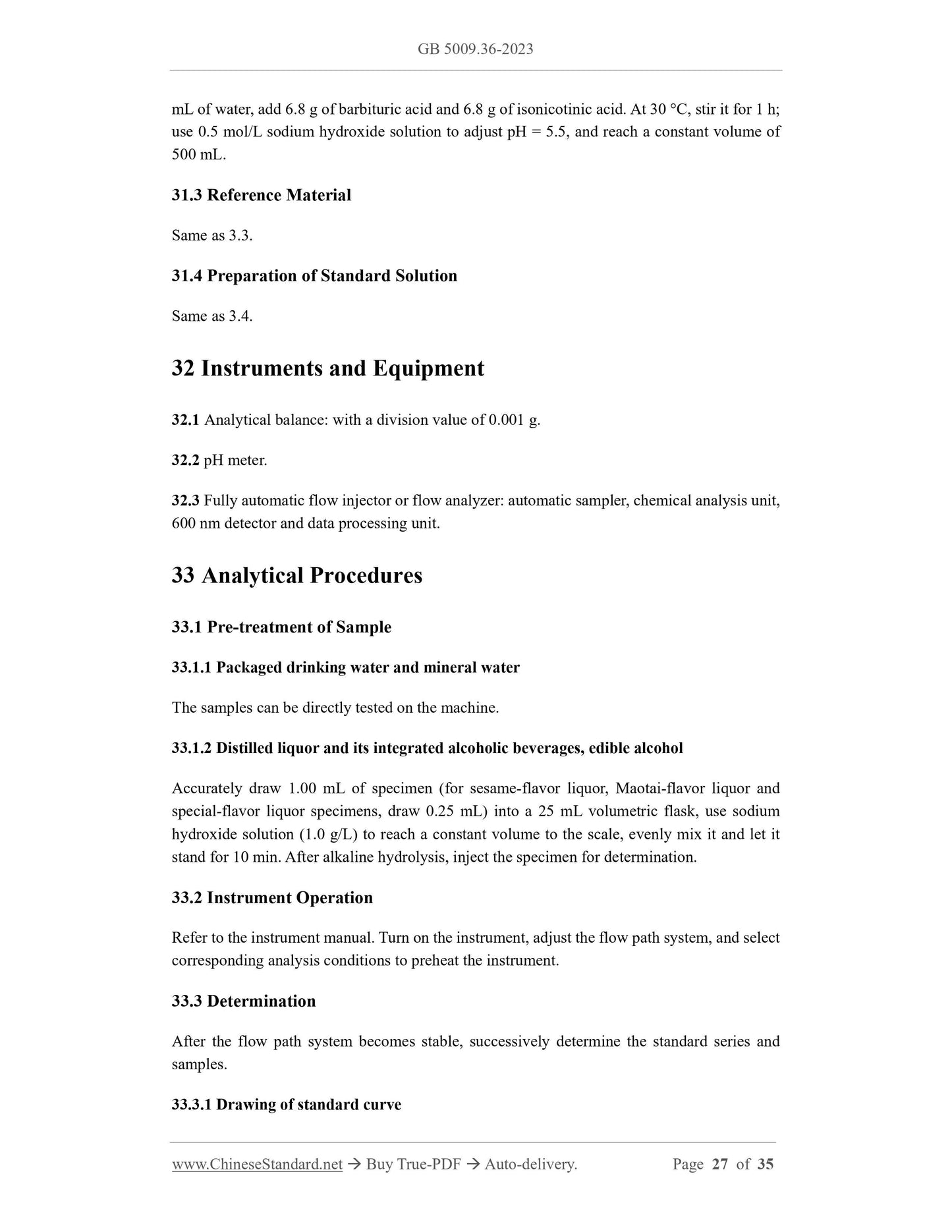1
/
of
12
www.ChineseStandard.us -- Field Test Asia Pte. Ltd.
GB 5009.36-2023 English PDF
GB 5009.36-2023 English PDF
Regular price
$410.00
Regular price
Sale price
$410.00
Unit price
/
per
Shipping calculated at checkout.
Couldn't load pickup availability
GB 5009.36-2023: National food safety standard - Determination of Cyanide in Foods
Delivery: 9 seconds. Download (and Email) true-PDF + Invoice.Get Quotation: Click GB 5009.36-2023 (Self-service in 1-minute)
Newer / historical versions: GB 5009.36-2023
Preview True-PDF
Scope
This Standard specifies the method for the determination of cyanide in foods.The first method “spectrophotometry” is applicable to the determination of cyanide in distilled
liquor and its integrated alcoholic beverages, edible alcohol, tapioca flour, packaged drinking
water and mineral water.
The second method “gas chromatography” and the third method “gas chromatography - mass
spectrometry” are applicable to the determination of cyanide in liquor, edible alcohol, grain,
packaged drinking water and mineral water.
The fourth method “ion chromatography” is applicable to the determination of cyanide in
distilled liquor and its integrated alcoholic beverages, edible alcohol, packaged drinking water,
mineral water and beverages (based on almonds).
The fifth method “flow injection / continuous flow - spectrophotometry” is applicable to the
determination of cyanide in distilled liquor and its integrated alcoholic beverages, edible
alcohol, packaged drinking water and mineral water.
Method I - Spectrophotometry
Basic Data
| Standard ID | GB 5009.36-2023 (GB5009.36-2023) |
| Description (Translated English) | National food safety standard - Determination of sucralose in foods |
| Sector / Industry | National Standard |
| Classification of Chinese Standard | X09 |
| Word Count Estimation | 15,124 |
| Date of Issue | 2023-09-06 |
| Date of Implementation | 2024-03-06 |
| Issuing agency(ies) | National Health Commission of the People's Republic of China, State Administration for Market Regulation |
| Summary | This standard specifies the high performance liquid chromatography and high performance liquid chromatography-tandem mass spectrometry methods for the determination of sucralose (sucralose) in foods. This standard applies to the determination of sucralose (sucralose) in food. |
Share
